When it comes to the planet we live on, do we actually have to be reminded to preserve our natural resources and do our part for the environment? Some of us might feel overwhelmed by constant pressure, but it is really that simple. Just do your part and relax. If you are not able to do donate funds to save the planet, you can do small steps that will mean a lot. Each of us can do our part starting in our households. We can start with a proper rubbish removal and moderate usage of energy and natural resources. Check out the following tips and do your share. Each of us can contribute.
Place mirrors in your rooms
Did you know that you can use your mirrors to utilize the natural lightning in your household in order to reduce energy? Just place them on strategic places and you will achieve your goal. Correct positioning of the mirrors will provide the illusion of increased space. If you place one near an indoor plant, it will act like a window and the plant will have better conditions for growth. Not to mention it will add greenery to your room.
Recycle dryer heat
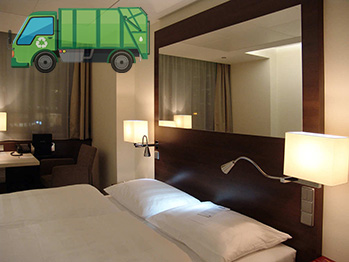 Usually, dryer heat is wasted by being pumped out and vented from our houses. We do not recycle our dryer heat but we should because there are ways to do so, and it has significant benefits. You can buy a dryer vent converter, which will conduct the heat from the dryer back to your house. This is a smart way to reduce your energy bill and keep your home worm during cold winter months. But, you should know that recycled dryer heat is not appropriate for all homes due to its moist feature. If you have moisture issues in your home or mould problems, recycling dryer heat is not an option for you. If, on the other hand, you have dry static air inside, added moisture is more than a good thing.
Usually, dryer heat is wasted by being pumped out and vented from our houses. We do not recycle our dryer heat but we should because there are ways to do so, and it has significant benefits. You can buy a dryer vent converter, which will conduct the heat from the dryer back to your house. This is a smart way to reduce your energy bill and keep your home worm during cold winter months. But, you should know that recycled dryer heat is not appropriate for all homes due to its moist feature. If you have moisture issues in your home or mould problems, recycling dryer heat is not an option for you. If, on the other hand, you have dry static air inside, added moisture is more than a good thing.
Make your own dryer sheets
Dryer sheets are designed to soften our clothes during the washing process and remove static from our dryer. But, after we use them, we don’t need them anymore and we throw them away. However, there are ways to create our own sheet, which will cost less and is eco-friendly. You can use an old sock and put approximately 2 spoons of liquid fabric softener. After you pour it on the sock, make sure the sock evenly soaks the softener. The sock will act the same as the dryer sheets, only the sock is reusable. Not only you will save money and energy, but you will save resources needed to produce dryer sheets and prevent waste by not having to throw them away.
There are always ways to save energy by reusing and recycling. You should never throw away things you can reuse. Once you get used to reusing and recycling, it will become natural to pay more attention to our environment and saving in general.
Environment needs our full attention. Not only we can take steps in our homes to save resources, energy and money, and to ensure proper rubbish removal, but we can also do the same in our workplaces. Each company or small business can be more environmentally aware and take action to have greener offices. When a company is not using resources efficiently it is creating unnecessary waste. For example, simply switching to recycled paper and having paper recycling bins is a huge change that has a number of benefits. Some of them include saving money, appealing to green customers, making connections with other business that are environmentally friendly, have less impact on the Mother Nature, etc. Therefore, if you still haven’t done anything concerning this concept, you can start today and green your workplace in a few simple but effective steps.
Decrease energy consumption
The fact is that computers, office appliances and other office equipment consume a lot of energy. Each year a demand for energy consumption increases. In order to prevent this, each and every of us can do the following:
- Purchase green office equipment
There are appliances and other equipment we use in our offices that use more energy than needed, in comparison to energy efficient models. Therefore, when buying printer, computer, laptop, monitor or fax, it is recommended you buy models with eco-friendly features, including fax machines that are able to scan and send double-sided copies or printers that print on both sides.
- Buy fluorescent light bulbs
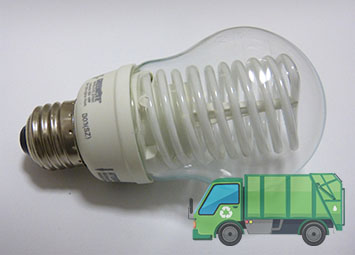 Did you know that old incandescent bulbs use over 60% more energy than the fluorescent light bulbs? So, next time you go shopping for light bulbs, save money and energy by choosing fluorescent ones. Not only that they consume less electricity but they also last 13 times more than incandescent bulbs. Additionally, you can open your curtains and blinds and have some free light in.
Did you know that old incandescent bulbs use over 60% more energy than the fluorescent light bulbs? So, next time you go shopping for light bulbs, save money and energy by choosing fluorescent ones. Not only that they consume less electricity but they also last 13 times more than incandescent bulbs. Additionally, you can open your curtains and blinds and have some free light in.
- Turn off your appliances
When not using them, turn off your computer and other office equipment. The easiest way is to unplug them but you can also buy a surge protector with an on/off switch. Other items that draw power when they are plugged in are battery charges. When the batteries are charged, unplug them and prevent unnecessary wasting of energy. Also, did you know that screensavers do not actually save energy? They consume energy. Blank screen will do just fine.
- Travelling
You can make your business travel greener and minimize them by using telecommuting tools. Using hybrid car rental is also a great solution. When staying in a hotel, choose the one that is green-focused. In addition, when travelling to work, suggest your employees to opt for bicycles and encourage them to use public transportation instead of their cars by providing travel benefits. Another great idea is telecommuting or videoconference. Telecommuting enables employees to work from home if possible and videoconference is an efficient way to get the work done without travelling to work.
Rubbish removal
According to statistics, one office worker produces a half-pound of paper rubbish a day. It is a big number, isn’t it? We should consume less paper, use recycled paper and make sure that our waste doesn’t end up in landfills.
- Purchase recycled office supplies
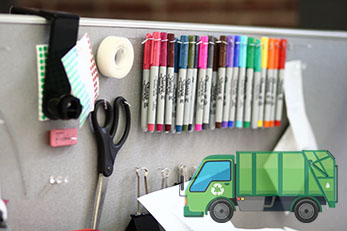 Recycled paper costs the same as all-virgin paper. We should practice buying recycled copy paper and other paper products like calendars, envelopes, planners, etc. When it comes to fax machines and printers, ink and leaser toners will save you money. You can give your old toner cartridges for recycling as many stores, as well as other recycling centres, accept them for recycling process. Additionally, you can buy recycled plastic desk organizers, binders and other supplies. Save money while saving environment. Also buy used furniture. And make sure that you recycle e-waste like computers, cell phones, printers etc. Finally, purchase high-quality equipment that will last and not break quickly. This step prevents creating manufacturing waste as you will not have to buy new things.
Recycled paper costs the same as all-virgin paper. We should practice buying recycled copy paper and other paper products like calendars, envelopes, planners, etc. When it comes to fax machines and printers, ink and leaser toners will save you money. You can give your old toner cartridges for recycling as many stores, as well as other recycling centres, accept them for recycling process. Additionally, you can buy recycled plastic desk organizers, binders and other supplies. Save money while saving environment. Also buy used furniture. And make sure that you recycle e-waste like computers, cell phones, printers etc. Finally, purchase high-quality equipment that will last and not break quickly. This step prevents creating manufacturing waste as you will not have to buy new things.
- Cut down on paper consumption and reuse
It is simple to reduce your paper usage. You can set your printer to print on both sides, use smaller font, put wider margins, etc. Instead of printing instructions or other copies, try using emails for these purposes. But if you really need printed copies, buy a printer which uses vegetable-based inks and recycled paper. Other advantages of using recycled paper include:
- Virgin paper production causes more pollution that recycled
- More bleach, which is a toxin, is used in making virgin paper
- You protect ecosystems and forests
Besides the paper, everything that can be reused in the office, reuse! If you have some appliances, furniture or computer equipment, donate them to schools or shelters. Some people will be more than happy to take them.
- Where does your rubbish go?
There are certain programs that enable you to track down your waste and provide you with reports on strategies used for your own office waste elimination. It is encouraging to learn that you do good things for your environment and that you manage to reduce waste.
In conclusion
You can influence your employees or co-workers and help them think green as well. If you want to an advocate for eco-friendly routines, educate them. You can set up monthly meetings and provide them with information regarding certain standards and procedures.
Simple thinks like posting stickers to remind them to save energy and resources will make them more aware of our impact on environment and ensure safe rubbish removal. Remind them to turn off the light will have more impact than you probably think. Or encourage them to use natural and homemade cleaners instead of commercial ones when cleaning their office space. You can also insist on using filtered water and reusable cups instead of using bottled water. Lastly, office sharing is a great idea if you have employees that do not use their office on a daily basis. You can assign offices based on a schedule and save on furniture, energy, supplies, etc., not to mention the benefits for your environment.
Most of us reuse water plastic bottles (both PET and polycarbonate) because of their convenience and because they are cheap way to carry water. So what? What can be wrong with that, you may ask. Water was in it in the first place, right? Well, a single refill may not cause any issues but if we do that repeatedly, it can cause some serious health issues. Since they are hard to wash, the minute you unseal your new water bottle, you risk the bacteria to reproduce. The plastic used in the manufacturing of the bottles often contain a substance called BPA (bisphenol A.) or phthalates, which can be released when the plastic is wormed. This substance is endocrine disruptor and can cause hormone disorders. There is no certain evidence that the reuse of plastic bottles can actually cause fatal health issues, but until we know more, it is safer to stay away from reusing these bottles. Just throw them away along with your other rubbish removal. However, there are other options. There are bottles made of materials that do not represent any harm to our body. Check them out.
Steel bottles
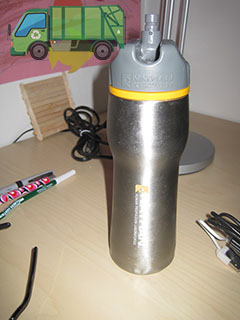 Stainless steel bottles are excellent choice for keeping your water in them. Steel is safe when in contact to drinking water so you can rest assured that they can pose health hazards. You will not have to worry whether it will stay in one piece after you accidentally drop it. It is heat-tolerant and long-lived. However, keep in mind that the inside of the stainless steel is also found in the bottle, not only on the outside. Otherwise, you have another plastic bottle that is covered with steel on the outside. However, a possible downside of these bottles is that the water might have a metallic taste.
Stainless steel bottles are excellent choice for keeping your water in them. Steel is safe when in contact to drinking water so you can rest assured that they can pose health hazards. You will not have to worry whether it will stay in one piece after you accidentally drop it. It is heat-tolerant and long-lived. However, keep in mind that the inside of the stainless steel is also found in the bottle, not only on the outside. Otherwise, you have another plastic bottle that is covered with steel on the outside. However, a possible downside of these bottles is that the water might have a metallic taste.
Glass bottles
Glass bottles have many advantages. They are cheap and easy to find. Just wash the used bottle and refill it as many times as you wish. Glass will not leak any chemical substance into your water and is also moderately heat-tolerant. Not to mention that glass is easy to recycle. On the other hand, there are also disadvantages. Glass shatter when you drop it. This is its main downside. But some manufactures have their glass bottles wrapped into coating that will not break. So, this is a plus. Another disadvantage is that these bottles can be heavy and most of us opt for lighter bottles.
Aluminium Bottles
Aluminium bottles resemble stainless steel bottles, but they have different characteristics. They are very light-weight. Aluminium bottles have to be lined with an epoxy layer or enamel, due to the fact that aluminium is reactive with acidic liquids. And, one of the main components of the epoxy layer is BPA, which indicates that it may not be safe to use. Also, these bottles are hard to clean and you cannot wash them in washing machine.
The bottom line is that using any of above mentioned bottles that you will reuse is a better option that immediately throwing away the waste along with other rubbish removal. Stainless steel bottles or plastic bottles that do not contain BPA are perhaps the best choice.
Waste removal has become a major problem because of the increasing population. The Earth has never been more polluted and it is time to take some action. Rubbish removal companies have become a necessity for a modern man, and not just a luxury. We are not able to get rid of the rubbish by ourselves, at least the one we cannot recycle.
We are all aware of the current situation and how important it is to keep our environment clean. Therefore, we are obliged to dispose of our waste effectively if we do not end up living surrounded by the same waste. For some reason, we are doing not do that. Some of us are too busy and it seems that there is never enough time to get everything done. This also includes clearing waste and clutter we create. That waste causes abnormalities in air and water. There is acid rain, smog and other similar disasters in the atmosphere as a result of dumping waste in the landfills. Water is also contaminated by various toxins, killing and extinguishing many animal species living in it.
Our society today is a very interesting mixture of extreme cleverness and laziness. We have come to point where we can travel in space and explore other worlds. We can exceptionally fast and are able to talk to people on the other side of the world holding just one little device called phone. And yet we grow lazier by the day. There is a saying that laziness stimulates progress and this is perhaps true. How do you think the remote control appeared? Someone said one day “I am tired of getting up from my seat to change the channels and the levels of the volume of my TV!” Because we want to move as little as possible we have come up with various conveniences in order to eliminate the need of physical efforts. People used to plow with horses and buffaloes – today they do it with tractors. We have all sorts of machinery which substitutes manual labour and now we have our sights set on computers and artificial intellect (AI). Scientists have spent decades developing robots – simple and more advanced ones. We have also made huge progress in the field of AI. Combining the two together will mean that we have created sufficient robots. The truth is we would all love to have a servant or something similar to it who will not complain about our attitude or the amount of work we throw at them. But will it be all good if one day we have just as many robots as we have people on this planet. Will any problems occur? What if things take turn for the bad and everything goes to hell? We can only hope that it won’t but let’s discuss some obvious changes that will occur.
We will completely stop going to work
 Manual labour will be completely gone. Many things which require a person’s presence nowadays will be done by robots. We already have advanced packaging machinery or cleaning supplies and tools which make our life easier. We have drinks and solutions bottled by streamlines etc. But what if some physical jobs also get replaced by what robots can do. Hiring workers will be no more and we will have robots cleaning the streets or driving our cars. We will also use them when we want to move and change locations. Removal companies will not send you a team of humans but robots instead. Or perhaps when you deal with junk and rid your home of waste, it will be handled by a machine and not a person. Since they have no muscles they will not get tired and the whole job will be completed in the nick of time. This also goes for sports as well. Unless we establish some sort of a rule that only people can play we will have either very boring or a very interesting world of sports. Why is that? Well if these machines are extremely intelligent they will likely never miss and will always make the right decision while playing. On the other hand their opponents will do the same and will always find a way to counter any actions. One thing is for sure though. It will not be as intriguing as it is now. There will be no trash talk and there will be no wrong decisions making sports really boring and streamlined. Come to think of it this will be the case with any field we put robots in. The absence of humanity at the workplace will lead everything being boring and grey. If robots serve us we will grow even lazier and will perhaps stop communicating with one another. We will be absorbed by ourselves completely.
Manual labour will be completely gone. Many things which require a person’s presence nowadays will be done by robots. We already have advanced packaging machinery or cleaning supplies and tools which make our life easier. We have drinks and solutions bottled by streamlines etc. But what if some physical jobs also get replaced by what robots can do. Hiring workers will be no more and we will have robots cleaning the streets or driving our cars. We will also use them when we want to move and change locations. Removal companies will not send you a team of humans but robots instead. Or perhaps when you deal with junk and rid your home of waste, it will be handled by a machine and not a person. Since they have no muscles they will not get tired and the whole job will be completed in the nick of time. This also goes for sports as well. Unless we establish some sort of a rule that only people can play we will have either very boring or a very interesting world of sports. Why is that? Well if these machines are extremely intelligent they will likely never miss and will always make the right decision while playing. On the other hand their opponents will do the same and will always find a way to counter any actions. One thing is for sure though. It will not be as intriguing as it is now. There will be no trash talk and there will be no wrong decisions making sports really boring and streamlined. Come to think of it this will be the case with any field we put robots in. The absence of humanity at the workplace will lead everything being boring and grey. If robots serve us we will grow even lazier and will perhaps stop communicating with one another. We will be absorbed by ourselves completely.
There are some serious problems which wait us in the end.
Speaking of absorption imagine the huge problems we will have if we inhabit the planet with robots. First of all we are already very densely populated. If we have a few million or billion robots among us (because everyone will want to have their own servant) we will need larger cities and more urban areas. The planet will quickly become too small for all of us and we will need to move somewhere else. That’s not an easy task though. We will also have way more obesity. This is already a very serious issue and if we stop going to work and rely on a machine to run errands for us we will completely stop moving and will perhaps become fat. Needless to say this is not a good thing. We will also want to consume more and it is not clear where all these goods will come from.
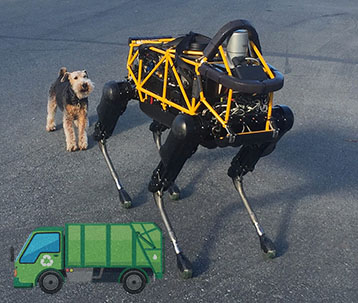 And now what happens if robots decide to turn on us? We have all seen movies where robots go to a rebellion against humans and things rarely end well. Isaac Asimov came up with the Three Laws of Robotics just because of these reasons. Their goal is to protect humanity and robots equally. We will not quote them literally but just outline them:
And now what happens if robots decide to turn on us? We have all seen movies where robots go to a rebellion against humans and things rarely end well. Isaac Asimov came up with the Three Laws of Robotics just because of these reasons. Their goal is to protect humanity and robots equally. We will not quote them literally but just outline them:
- A Robot may not harm on injure a human being
- A Robot must obey orders from humans unless they contradict the First Law.
- A Robot must protect itself unless its actions contradict the First and Second Laws.
Even if they do not go to war with us how can we be absolutely sure that we can rely on them to always make the right decision? After all a robot is just a system, a bunch of wires and an electronic plate. Nobody knows when a certain unit will malfunction. We will have them drive our busses and fly our planes. We already have many cases in which terrible accidents have happened because of a computer failure of a vehicle or an aircraft. How do we know if a robot will stop at a walkway or a traffic light? We should probably stop complaining and try to deal with whatever we have on our hands for now. Having Robots everywhere can wait for now.
Global Warming is one of the most important issues that humanity is facing in its current history. It is surprising however that so many people know so little about the problem.
So, what exactly is global warming?
The term Global Warming is used to designate the phenomenon of increase of the average surface temperature of the planet due to a variety of effects, mainly attributed to greenhouse gases. The most common greenhouse gases are carbon dioxide and methane and they share the quality that they are absorbing heat and thus prevent the said heat to escape the planet.
According to studies that have been conducted by the Environmental Protection Agency of the United States, the overall temperature of the planet has increased with nearly one degree Celsius in the past century alone, which might not sound like a lot, but it actually is – and has the potential of tipping the balance in nature towards a side that is not favorable for anyone living on the planet.
What facts about Global Warming should every responsible citizen know?
Listed below are several basic points about Global Warming that might be a good idea to be acquainted with:
 The greenhouse gases that are causing the Global Warming effect – methane and carbon dioxide are actually vital for the sustenance of life on the planet. The reason that they are having such a negative effect on that very same planet is the fact that they are being produced in too big a quantity over the past century or so.
The greenhouse gases that are causing the Global Warming effect – methane and carbon dioxide are actually vital for the sustenance of life on the planet. The reason that they are having such a negative effect on that very same planet is the fact that they are being produced in too big a quantity over the past century or so.- Though it is not determined with a hundred percent certain, human activities might very well turn out to be the main contributing factor to the over-emittance of those greenhouse gases.
- It is not possible to eradicate the negative effects on climate that Global Warming has, because the greenhouse gases stay in the atmosphere for years at a time and there is no way to remove them using technology and science. The only way to remove them is to wait out until they have disappeared naturally, while at the same time reduce the production of new excessive batches of greenhouse gases.
- Climate studies that have been conducted by a number of independent weather researchers and institutions have concluded that the last two decades of the 20th century have been the hottest ones in the history of the past four centuries. This fact is often cited as the surest prove that global warming is indeed very real (because, believe it or not, there are people who do not think such a thing exists).
- According to recent scientific studies, the level of the see on a global scale is going to rise with 7 to 14 inches in the following century alone due to the effects of Global Warming.
- The one place on Earth that is going to suffer the most from the effects of Global Warming is the Arctic. The negative effects are already heavily felt there with constant reports of ice-caps melting, which leads to disappearance of whole eco-systems. Global Warming is indeed a disaster for the Arctic as we know it.
- The Arctic Climate Impact Assessment report for 2000-2004 period is one of the most important documents related to the study of Global Warming. According to the report, the temperatures in Alaska, Western Canada and Russia have risen twice the global average in the said period alone.
- The Montana Glacier National Park in the United States used to have as many as 150 glaciers in 1910. Today, due to the effects that Global Warming has had on the environment, their number was drastically decreased – today there are just 25 glaciers in Montana.
- Global Warming is not affecting glacier and ice caps alone. Due to the greenhouse effect and pollution, coral reefs are suffering the worst ever bleaching in their history. The Great Barrier Reef in Australia is said to being destined to disappear in the foreseeable future.
- Wild forest fires, severe tropical storms and heat waves around the globe ar
 e an indication of the serious effects that Global Warming is having on the weather in planetary scale.
e an indication of the serious effects that Global Warming is having on the weather in planetary scale. - In the past century, sea levels have risen with 7 inches due to the effects that Global Warming is having on the environment around the globe. Seven inches might not sound very scary, but in reality that is more than the rise in sea levels that has been registered in the previous 2000 years combined. The matter becomes even more dire when we think about the fact that there are over a hundred million people on the planet that are living within 3 inches of the sea level, not to mention that some of the largest cities in the world are built on endangered coastal areas.
- The rate with which humans are emitting carbon dioxide – the main greenhouse gas that is causing all the problems – is much faster than the rate in which plants and trees are able to absorb it – which is cited as being the main contributor to the greenhouse effect.
- The melting of the glaciers is going to have two main – and potentially disastrous effects. On one hands water levels are going to rise significantly. On the other hand the melting is going to cause water shortages in areas that do not have access to other natural water sources.
- The Industrial Revolution which took place in the 18th and the 19th century in Europe, followed by the rest of the planet, caused a rapid increase in burning fossil fuels such as oil, natural gas and coil. This contributes greatly to the mass production of greenhouse gases and is also considered to be the main reason for the increase of the number of people who are suffering from asthma and other severe respiratory diseases on a global scale.
- The best way to contribute to the fight for protecting the environment is to optimize the waste management process at your home. Also you should teach your kids about it.
Recycling of discarded domestic and commercial products and their packaging is one of the most important aspects of effective circular economy. Without recycling, new products and packaging would have to be made solely from virgin materials which in many cases is uneconomical and environmentally unfriendly. There are a series of steps leading from discarding a product to production of new items from recycled materials. Each step along the way is highly important and requires effective completion in order for the recycling process to work properly. Consumers as well as local waste management authorities are part of the so called recycling chain and everyone must do their bit in order for it to work properly.
Correct waste separation by domestic and commercial consumers
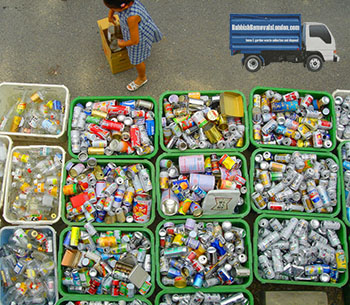 Businesses and households are part of today’s consumer society. Whether it be domestic products, food stuffs or commercial supplies and raw materials, these entities consume on a daily basis and generate various types of waste. The most common types of waste generated by households and offices are:
Businesses and households are part of today’s consumer society. Whether it be domestic products, food stuffs or commercial supplies and raw materials, these entities consume on a daily basis and generate various types of waste. The most common types of waste generated by households and offices are:
- Organic waste (food scraps etc.);
- Solid waste (some of it recyclable);
- Hazardous waste (usually collected and recycled separately);
For a waste management and recycling system to work properly, waste also needs to be separated accordingly prior to removal and processing. In simple terms rubbish needs to be thrown out in the correct bin. In the UK, households and businesses make use of different colour rubbish bins and containers indicating which waste goes where. If bins and containers are not colour coded, they usually have clear labelling showing what type of waste they are meant to hold. Domestic and commercial consumers have the responsibility to separate their waste and use the correct bin. Provided this is done properly, it is up to local rubbish removal authorities to take over for the next step of the process which is regular waste removal and disposal.
Post-collection processing of domestic and commercial waste
Local rubbish removal and disposal bodies are responsible for the timely and effective collection of domestic and commercial waste, separated correctly (places in the correct bins/containers). Certain types of waste are collected more often than others, for instance organic and general waste are usually subject to weekly or fortnightly collection, whereas various forms of solid waste may be collected less frequently, say once a month. There are number of ways in which local authorities deal with the rubbish and junk they collect from homes and commercial establishments.
- Local authorities do their own separation and processing – in some cases, local authorities collect, separate (sort) rubbish and process it in their own treatment & recycling facilities. This however is the more uncommon situation as local governing bodies usually delegate separation and processing to private operators (privately run waste management companies).
- Local authorities only collect and deposit waste, but private operators are responsible for separation and processing/recycling of waste. This is the more common arrangement as it provides a stable joint enterprise between public and private sectors.
The actual separation process
Proper separation of waste is essential in order to produce higher quality recyclate. The purer the input the more efficient recycling and higher quality end product. Modern waste treatment plants use various types of advanced separation technology. Waste separation machinery these days is highly advanced and constantly evolving. Some countries in Europe are pioneers and established leaders in development and implementation of waste separation technology. Depending on the type of waste being separated different technologies can be used. Three of the most effective and widely used types of separation are:
- Chemical – waste is treated using special chemicals to separate useful materials/substances from unwanted impurities;
- Mechanical – usable waste is separated from general waste stream based on its physical characteristics i.e. weight, size, density, buoyancy etc.
- Optical – usually applied on glass waste, this technology uses a so called ‘computer eye’ to separate different types of glass waste based on their colour.
Extraction of recyclable material from waste
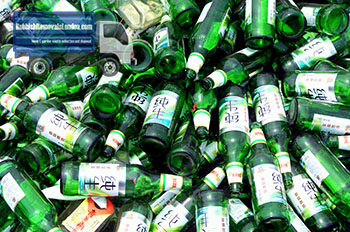 Separation of waste is prior to extraction and recycling. Provided separation is successful and only the desired type of waste remains, the next step would be to extract and purify the recyclable material. Extraction and purification of recyclables is quite a specific process, requiring one or more advanced technologies, sometimes combination between chemical and mechanical treatment is needed. For the purpose of this article, recyclable waste is limited to paper, glass, metal and plastic. In a few words, this is how the system works:
Separation of waste is prior to extraction and recycling. Provided separation is successful and only the desired type of waste remains, the next step would be to extract and purify the recyclable material. Extraction and purification of recyclables is quite a specific process, requiring one or more advanced technologies, sometimes combination between chemical and mechanical treatment is needed. For the purpose of this article, recyclable waste is limited to paper, glass, metal and plastic. In a few words, this is how the system works:
- Paper waste – recycling paper waste is relatively easier than other types, and involves chemical and mechanical processing. Usually paper and cardboard waste is soaked in chemicals which break it down to a slush-like consistency known as pulp. Pulp is repeatedly treated with chemicals (including bleach) to clean and purify it, removing dyes, ink etc. Pulp is eventually dried and forms different types of recycled paper, reprocessed by manufacturers who use recycled paper materials.
- Plastic waste – usually plastic waste recycling begins with shredding or breaking down plastic into small bits and pieces. Once the homogenous mass of shredded plastic is ready, it is usually fed to special machines which melt it down using heat, chemicals or both. The most common type of recycled plastic is pellets. Pellets made of recycled plastic are used in the manufacturing of other plastic products. Some plastics are non-recyclable.
- Glass waste – glass waste is energy intensive to recycle, so the process is more complex. Glass waste is first separated, then mechanically broken down to small pieces. The most effective way to recycle glass is to melt it down in in kilns/ovens until liquefied. The recycled glass is then cut and shaped and cooled off for further processing (usually by specialised glass product manufacturers).
- Metal waste – metal waste is separated at specialised treatment plants in accordance to type of metal being extracted, this is done both chemically and mechanically. Different metals react to different chemicals, or melt at a specific temperature. Metal recycling is quite energy intensive and requires large scale installations. In most cases, separating different metals from metal waste stream is done at the treatment site.
Composition of collected and processed waste (domestic & commercial), UK 2014/15
| Type | Amount |
| Paper and Cardboard | 41.1% |
| Glass | 19.2% |
| Other Materials | 17.8% |
| WEEE | 8.4% |
| Textiles | 2% |
| Plastics | 7.4% |
| Metals | 4.1% |
Nowadays social media is a great part of our everyday live. We share experience, photos, videos and ideas and people from all over the world do the same. Due to our different preferences we have an enormous variety of social media, web and video blogs. However, it is not always a good idea to share every piece of your life, because people may give wrong interpretation of these posts. But there are not only personal pages but accounts made to share interesting or useful facts and funny pictures or videos. Two of the most visited social networks are Instagram and Pinterest.
Social media of new generation
Instagram was introduced in 2012 and today it is the fastest growing social media platform. Everyday over 100 million posts are uploaded and people produce over 10000 engagements every second just by tapping twice on their touchscreen. There are no pop-ups and people only see photos and videos on their home page. You can follow not only your friends but also:
- Celebrities
- Accounts created for fun
- Beauty blogs
- Cooking tips
- Daily inspiration
- Fitness motivation
The cutest pets have accounts created by their owners who not only share their experience with this animal but also give some useful pieces of advice. You can find photos and people similar who share your interests. Even better you can search for something just by typing a key word and using ‘#’ the so called hashtag. When you use a popular hashtag under your photo more people will see it and they can start following you even if they don’t know you. The only thing negative about this app is that the videos that are uploaded can’t be very long but the admins work to improve the app at all. A lot has changed through the years and that’s why people like it even though you can chat with your followers.
Interests on Pinterest
On the other hand, Pinterest is a completely different social network. It offers different opportunities to its users. When you create an account on Pinterest you choose the things you want to see on your ‘board’. But you can not only read articles, you can create them. Using again hashtags your posts will reach different readers. An article on Pinterest usually leads to blogs and people use the app to share widely their experience. Which may be boring and time consuming to open a page after page. But the truth is that you can find really useful and interesting information. No matter whether you are looking for some home remedies or for healthy cooking recipes, you are at the right place. You can recommend stores and services for example if you recently have used a rubbish removal company’s services you can share it to your friends, so they will know who to call next time. While using this website you not only share you experience, but you can communicate with others and save some ‘pins’ for later.
Pinterest is not the typical social media for photos and chatting with friends, but it helps you be creative. When you don’t have the time to read articles but you want some good photos, open your Instagram.
The unfavourable economic reality in many countries has produced a relatively new term in world economics, namely energy poverty. To be energy poor basically means that a person, or group of people do not have enough electrical power to lead what in other countries is known as normal day to day life. In the UK for instance, when people are asked about the term ‘energy poverty’ they think of not being able to pay the power bill, but in reality energy poverty is quite different. So far, the term has been officially defined as lack of access to electricity (or other fuel) and clean cooking facilities in the domestic environment.
The importance of access to energy
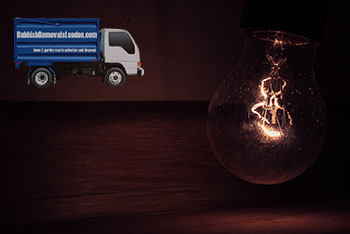 People in some regions of the world take electrical power for granted, while others do not even have a single light bulb in their entire home. As per the International Energy Agency, nearly four and half million premature deaths are the result of energy poverty in one form or another, mostly due to use of crude fossil fuels for home heating during cold months of the year. No access to electricity also has profoundly negative social, economic and environmental consequences. Access to electricity makes a tremendous difference in a person’s quality of life. For instance use of electrical appliances instead of doing household chores manually. Ability to be productive during the dark hours of the day, and much more.
People in some regions of the world take electrical power for granted, while others do not even have a single light bulb in their entire home. As per the International Energy Agency, nearly four and half million premature deaths are the result of energy poverty in one form or another, mostly due to use of crude fossil fuels for home heating during cold months of the year. No access to electricity also has profoundly negative social, economic and environmental consequences. Access to electricity makes a tremendous difference in a person’s quality of life. For instance use of electrical appliances instead of doing household chores manually. Ability to be productive during the dark hours of the day, and much more.
Energy Poverty Facts
- 2 billion people worldwide have no access to electricity;
- 3 billion people worldwide rely on biomass (firewood) for cooking;
- More than 95% of all energy poor live in Sub-Saharan Africa and Asia;
Possible solutions
There are different ways to overcome the problem of energy poverty in struggling regions of the world. Many of those countries are still far from being able to build and operate renewable or green energy schemes, but in such extreme cases even conventional means of generating electricity will be enough.
Another way is for developed countries to export electricity to struggling regions of the world. This however would be close to charity as people in developing regions cannot afford to pay for expensive electricity.
In many energy poor regions of the world, there is also a large scale problem with waste management. Accumulation of waste, along with presence of landfills is a serious environmental and economic issue. However with assistance from richer countries, waste to energy schemes might be established and treatment plants built. At least this would mean waste is put to good use. Having said that, an effective rubbish removal and disposal system will be needed if waste to energy schemes are to work.
The issue of supplying energy poor countries with the right amount of energy resource is a complex one and will take lots of thinking and development of infrastructure. It must be considered that the cost of bringing energy to such stricken communities is likely to be beyond the financial means of the region or country altogether, which makes funding such projects all the more complicated.
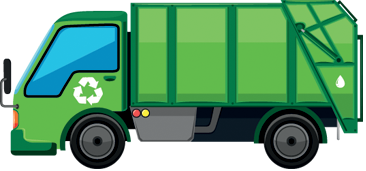

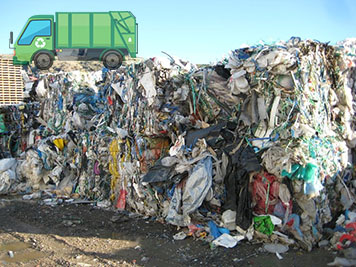
 The greenhouse gases that are causing the Global Warming effect – methane and carbon dioxide are actually vital for the sustenance of life on the planet. The reason that they are having such a negative effect on that very same planet is the fact that they are being produced in too big a quantity over the past century or so.
The greenhouse gases that are causing the Global Warming effect – methane and carbon dioxide are actually vital for the sustenance of life on the planet. The reason that they are having such a negative effect on that very same planet is the fact that they are being produced in too big a quantity over the past century or so. e an indication of the serious effects that Global Warming is having on the weather in planetary scale.
e an indication of the serious effects that Global Warming is having on the weather in planetary scale.